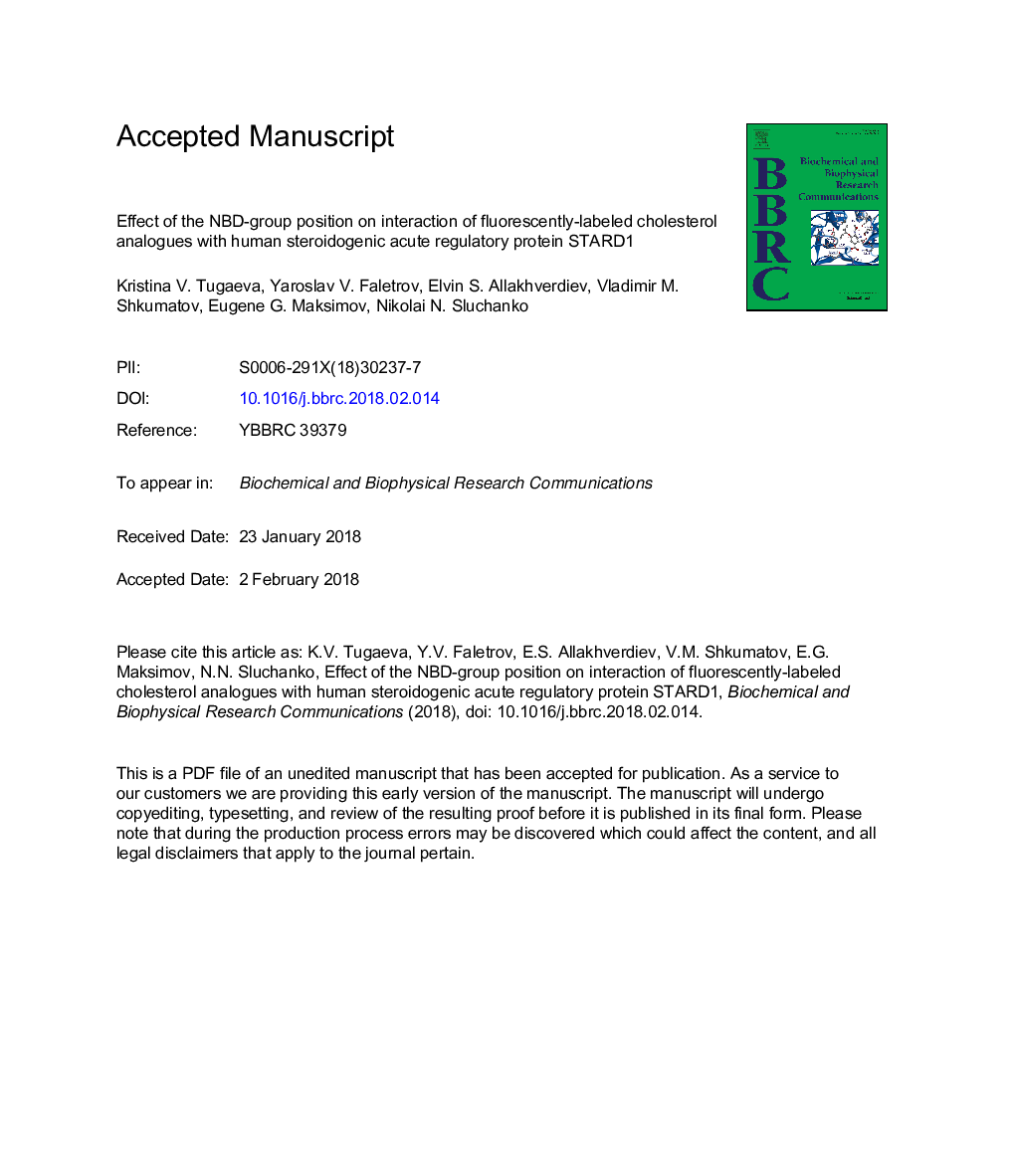| Article ID | Journal | Published Year | Pages | File Type |
|---|---|---|---|---|
| 8294191 | Biochemical and Biophysical Research Communications | 2018 | 14 Pages |
Abstract
Steroidogenic acute regulatory protein (StAR, STARD1) is a key factor of intracellular cholesterol transfer to mitochondria, necessary for adrenal and gonadal steroidogenesis, and is an archetypal member of the START protein family. Despite the common overall structural fold, START members differ in their binding selectivity toward various lipid ligands, but the lack of direct structural information hinders complete understanding of the binding process and cholesterol orientation in the STARD1 complex in particular. Cholesterol binding has been widely studied by commercially available fluorescent steroids, but the effect of the fluorescent group position on binding remained underexplored. Here, we dissect STARD1 interaction with cholesterol-like steroids bearing 7-nitrobenz-2-oxa-1,3-diazol-4-yl (NBD) group in different positions, namely, with 22-NBD-cholesterol (22NC), 25-NBD-cholesterol (25NC), 20-((NBDamino)-pregn-5-en-3-ol (20NP) and 3-(NBDamino)-cholestane (3NC). While being able to stoichiometrically bind 22NC and 20NP with high fluorescence yield and quantitative exhaustion of fluorescence of some protein tryptophans, STARD1 binds 25NC and 3NC with much lower affinity and poor fluorescence response. In contrast to 3NC, binding of 20NP leads to STARD1 stabilization and substantially increases the NBD fluorescence lifetime. Remarkably, in terms of fluorescence response, 20NP slightly outperforms commonly used 22NC and can thus be used for screening of various potential ligands by a competition mechanism in the future.
Keywords
Related Topics
Life Sciences
Biochemistry, Genetics and Molecular Biology
Biochemistry
Authors
Kristina V. Tugaeva, Yaroslav V. Faletrov, Elvin S. Allakhverdiev, Vladimir M. Shkumatov, Eugene G. Maksimov, Nikolai N. Sluchanko,
